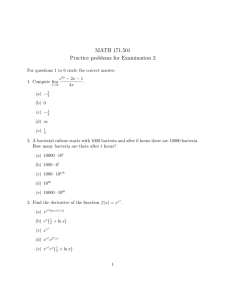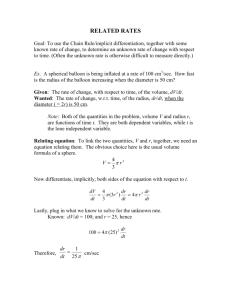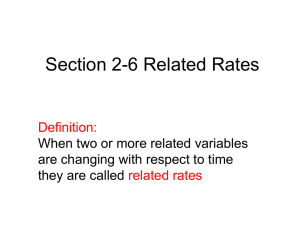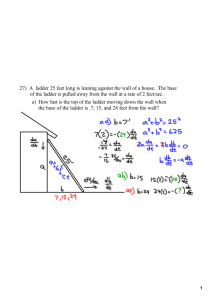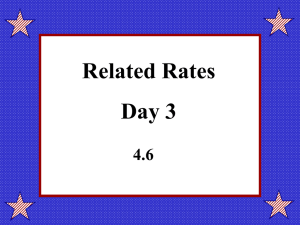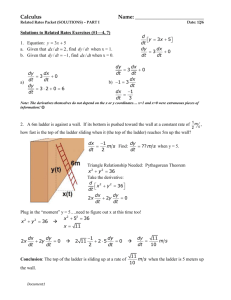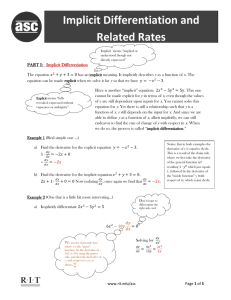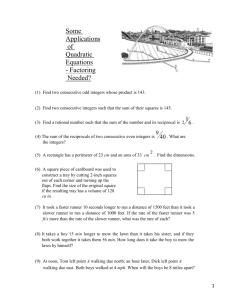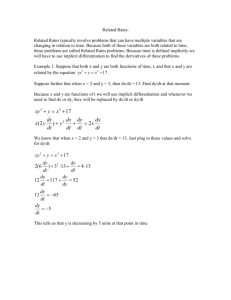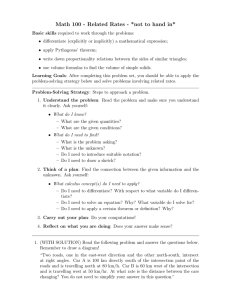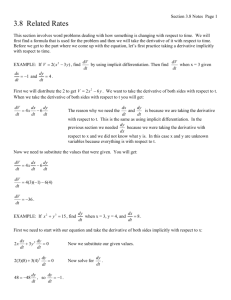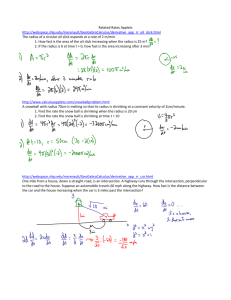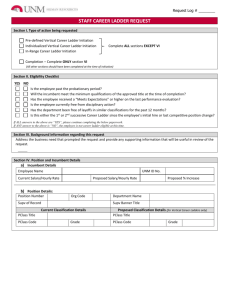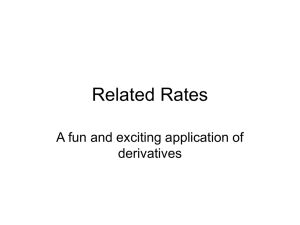Related Rates
advertisement
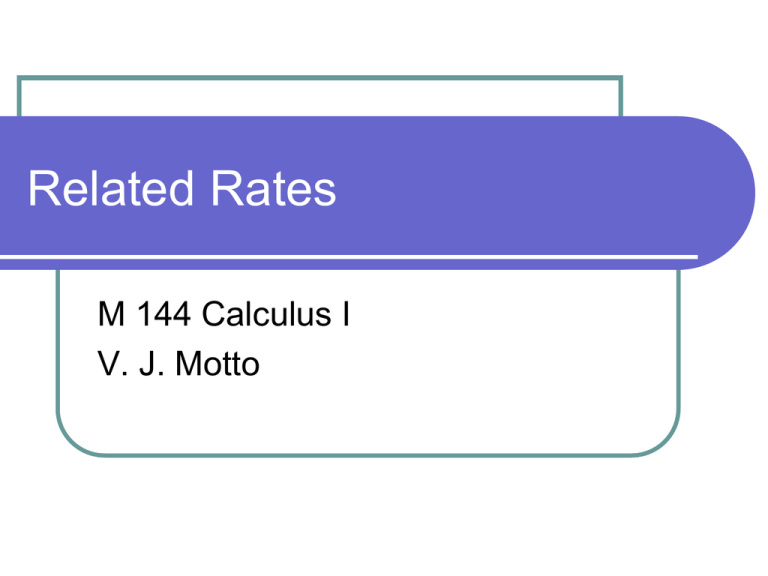
Related Rates M 144 Calculus I V. J. Motto The Related Rate Idea A "related rates" problem is a problem which involves at least two changing quantities which change with respect to time. These problems ask you to figure out the rate at which one of the quantities is changing given sufficient information on all the other quantities. Very often we must bring other information to our problem to help us. The Leaning Ladder Problem The “leaning ladder problem” is a classical problem in related rates. Many related rates problems require that we bring some knowledge to the problem. Consider the situation shown at the right. We can use the Pythagorean theorem to arrive at an equation that relates the information. Hence, we have x2 +y2 = 102 Classical Ladder Problem We can apply differential calculus to our problem if we assume that x = f(t) and y = g(t); that is both x and y are functions of time. When we differentiate the constraint equation, we will need to use the “chain rule.” This is shown at the right for you. x y 100 2 2 Dt [ x y ] Dt [100] 2 2 dx dy 2x 2 y 0 dt dy dx dy x y 0 dt dy An Illustration - Falling Ladder Here is an illustration of this situation. Steps for solving a Related Rate Problem Steps (continued) 5. 6. 7. Take the derivative of the equation that relates the variables with respect to "t" (remember to make use of the derivative rules) before you plug the given information in. Substitute the given rates and values into the derivative equation Solve for the desired quantity Example 1: The Falling Ladder A ladder 10 feet long leans against a building. If the bottom of the ladder slides away from the building horizontally at a rate of 4 ft/sec, how fast is the ladder sliding down the house when the bottom of the ladder is 8 feet from the wall. Example 1 (continued 1. Draw a picture: Label what you know and do not know in the diagram Example 1 (continued) Example 1: (continued) 5. Take the derivative of the equation that relates the variables with respect to "t" (remember to make use of the derivative rules) before you plug the given information in. Example 1: (continued) 6. Substitute the given rates and values into the derivative equation 7. Solve for the desired quantity. Example 2: Walking Problem Two students A and B are walking on straight roads that meets at right angles. Student A approaches that intersection at 1 meter per second and student B moves away from the intersection at 2 meters per second. At what rate is the angle at student B changing when A is 10 meters from the intersection and B is 20 meters from the intersection. Example 2 (continued) Example 2: (continued) y tan( ) x d sec 2 ( ) dt 1 10 5 d 1 4 dt 10 d dt 1 4 10 5 2 radians 25 sec Example 2 (continued) 1 d sec ( ) 10 dt 5 d 1 4 dt 10 2 d dt 1 4 10 5 2 radians 25 sec Can you determine the rate of change for the angle we student A is? Example 3: Snowball Problem A spherical snowball with an outer layer of ice melts so that the volume of the snowball decreases at a rate of 2 cm3/min. How fast is the radius changing when the diameter of the snow ball is 10 cm? Example 3: (continued) Example 3: (continued) dV 2 dr (4)( )( r ) dt dt
